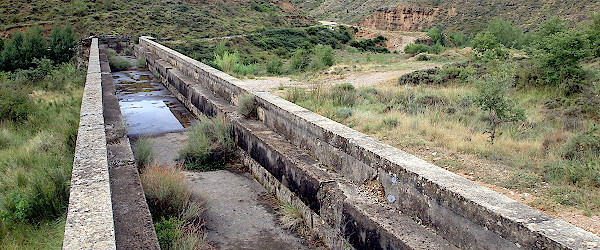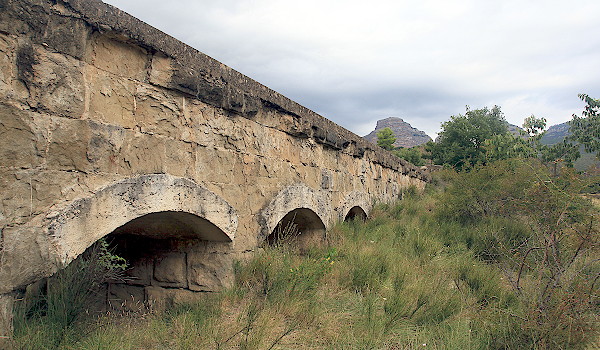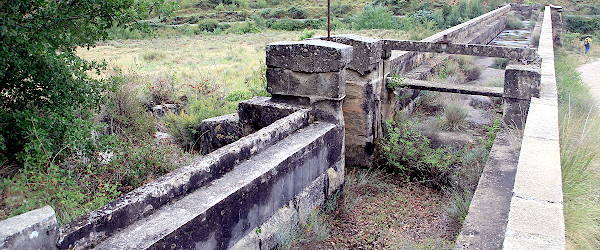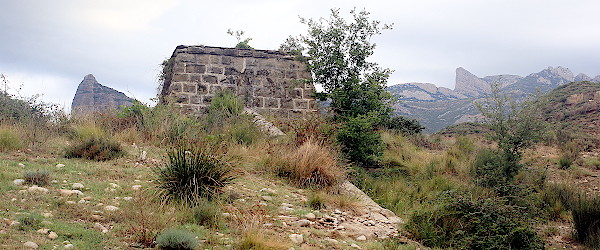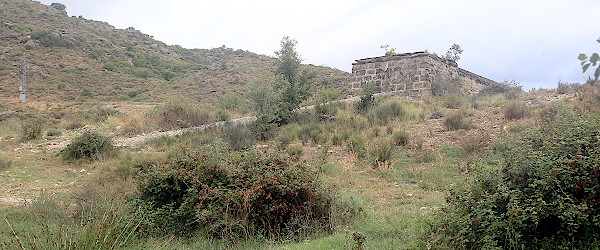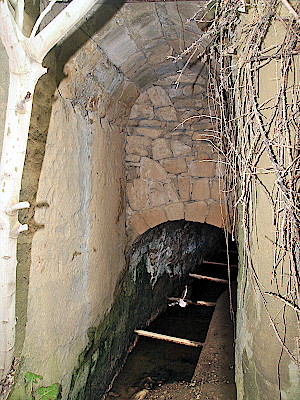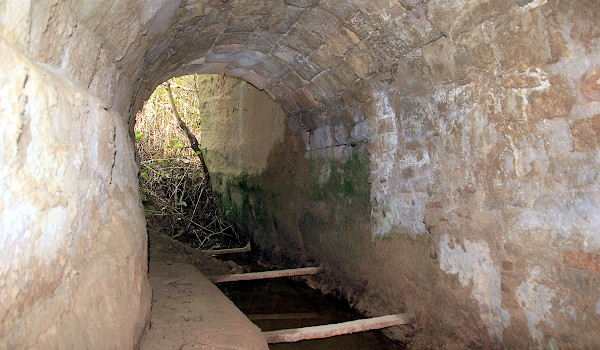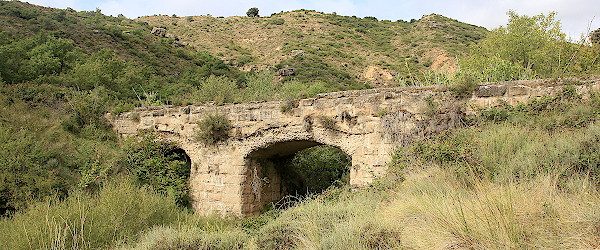
Sagarillo




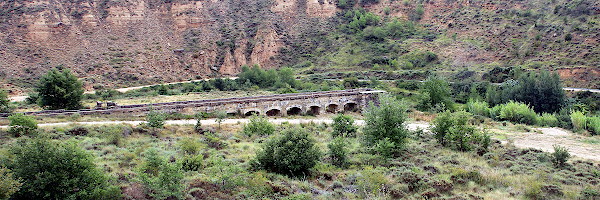
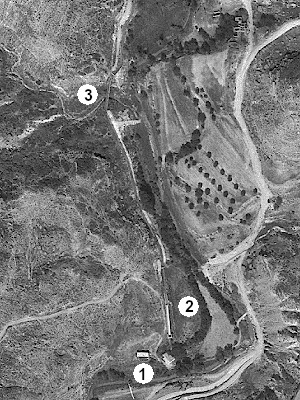
In the aerial photo from around 1980 (3) we see in the corner top right the walls of the old village. At the bottom in the middle are the former buildings of the power plant (❶). The channel is the white stripe that runs from top to bottom. It starts upstream from Sagarillo (❹ shown on larger image) and is over 900 m long. It is deep and wide and where it is not overgrown, one can easily walk in it (15). Where the acequia has to cross the Barranco del Mont, a solid aqueduct (❸, 16) has been built with two arches. The rest of the route runs between earthen dikes and is reinforced with masonry.
The last 100 m of the canal (❷) rise above the ground and become an aqueduct supported by arches (6). At the end of the aqueduct, if you look closely, you can distinguish a black square, the pressure pit or cubo (10–11). Also a gray line which is the tube that feeds the turbines. To the left of the number ❷, a white comma is visible: an overflow. In that place the edge of the channel is a bit lower (7, 9) and there is also a wooden trap door (8) to divert all the water to the flat terrain next to the canal.

